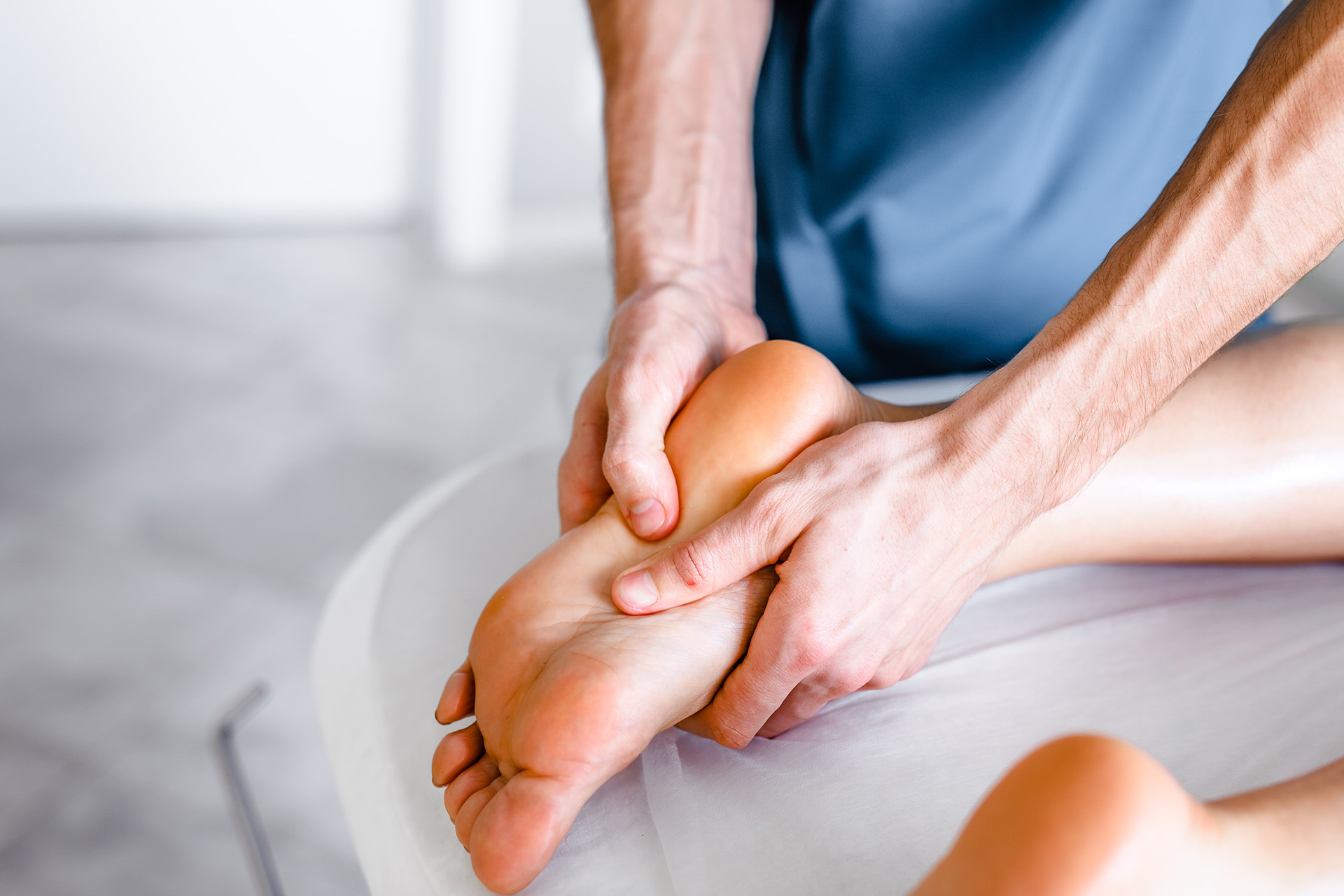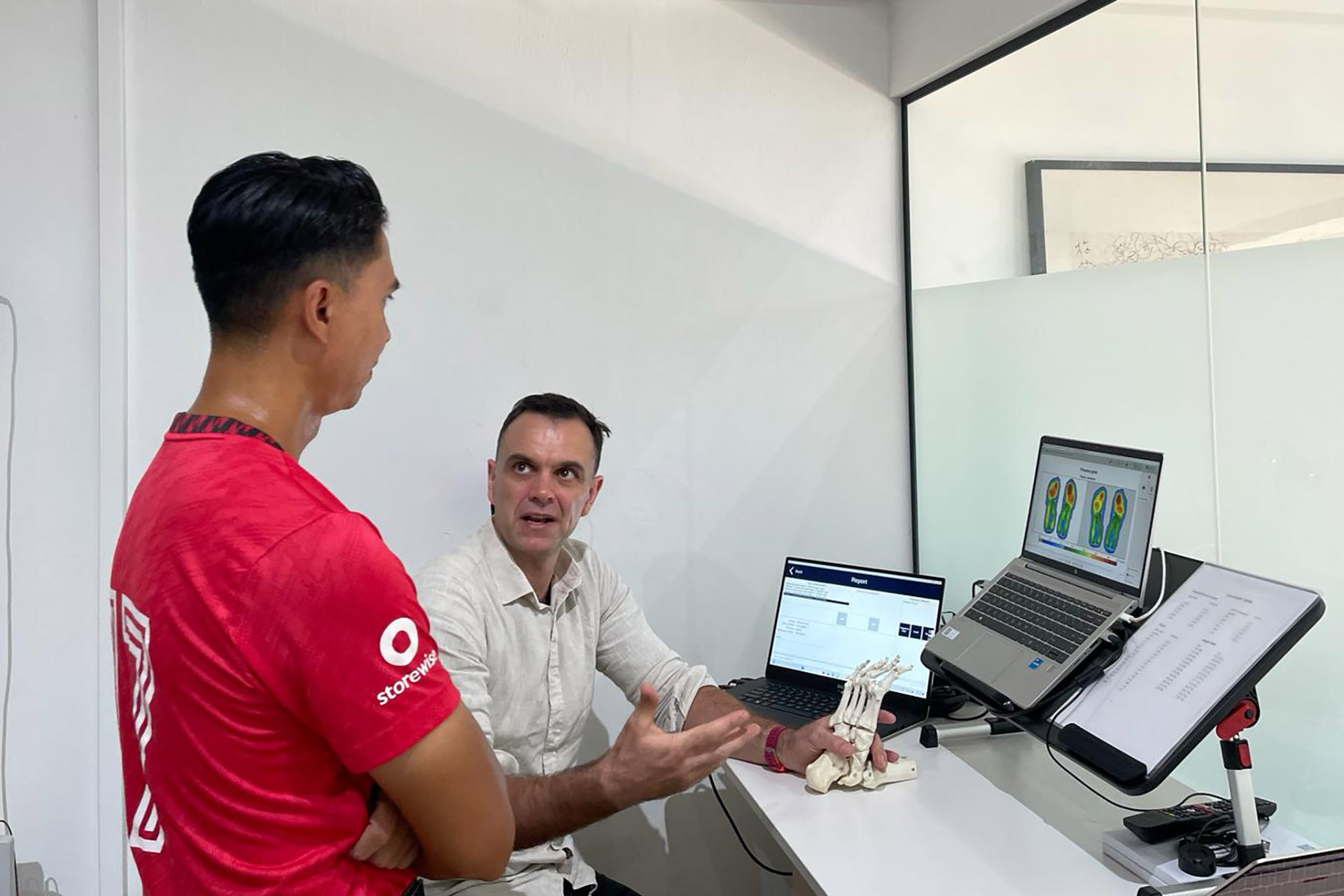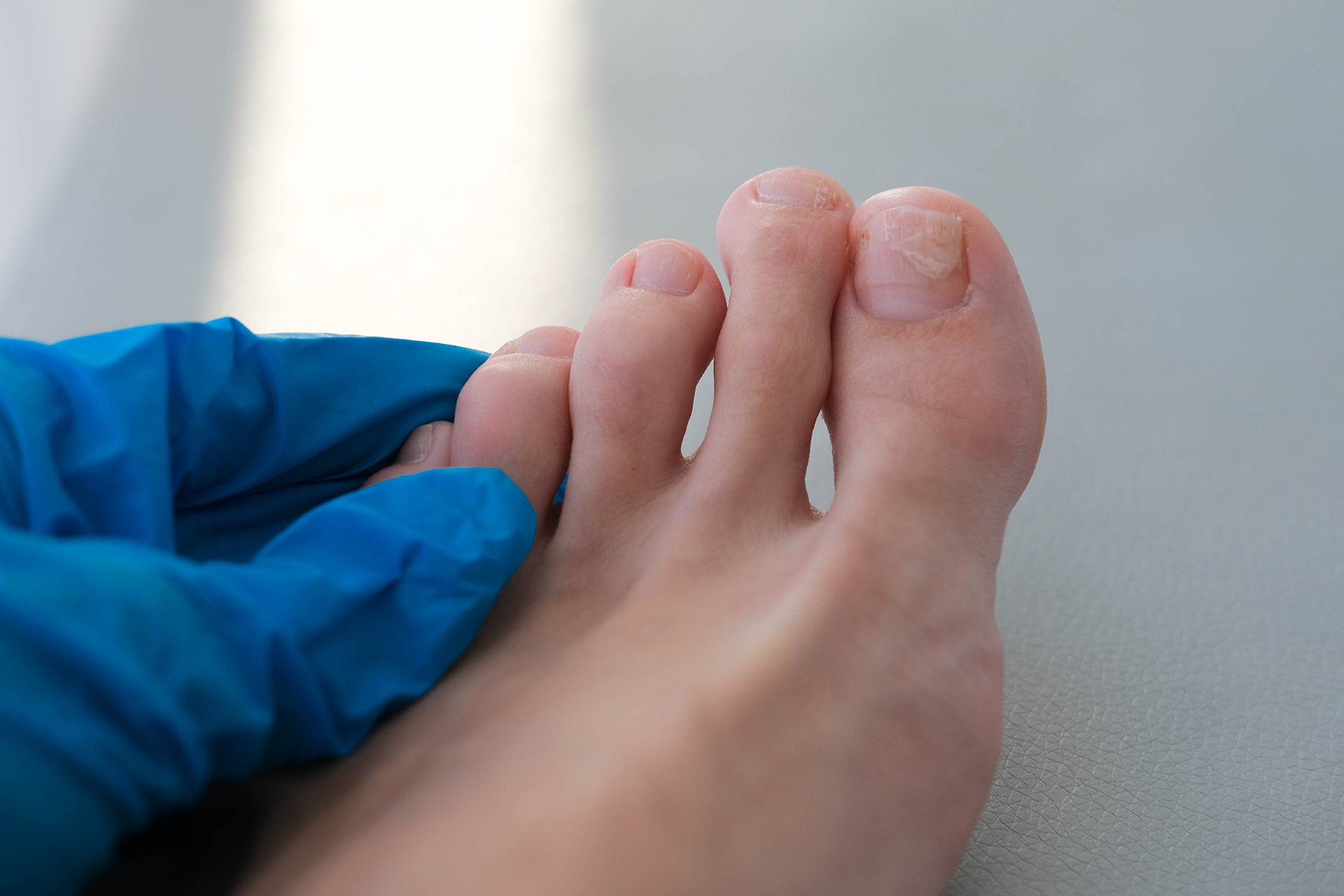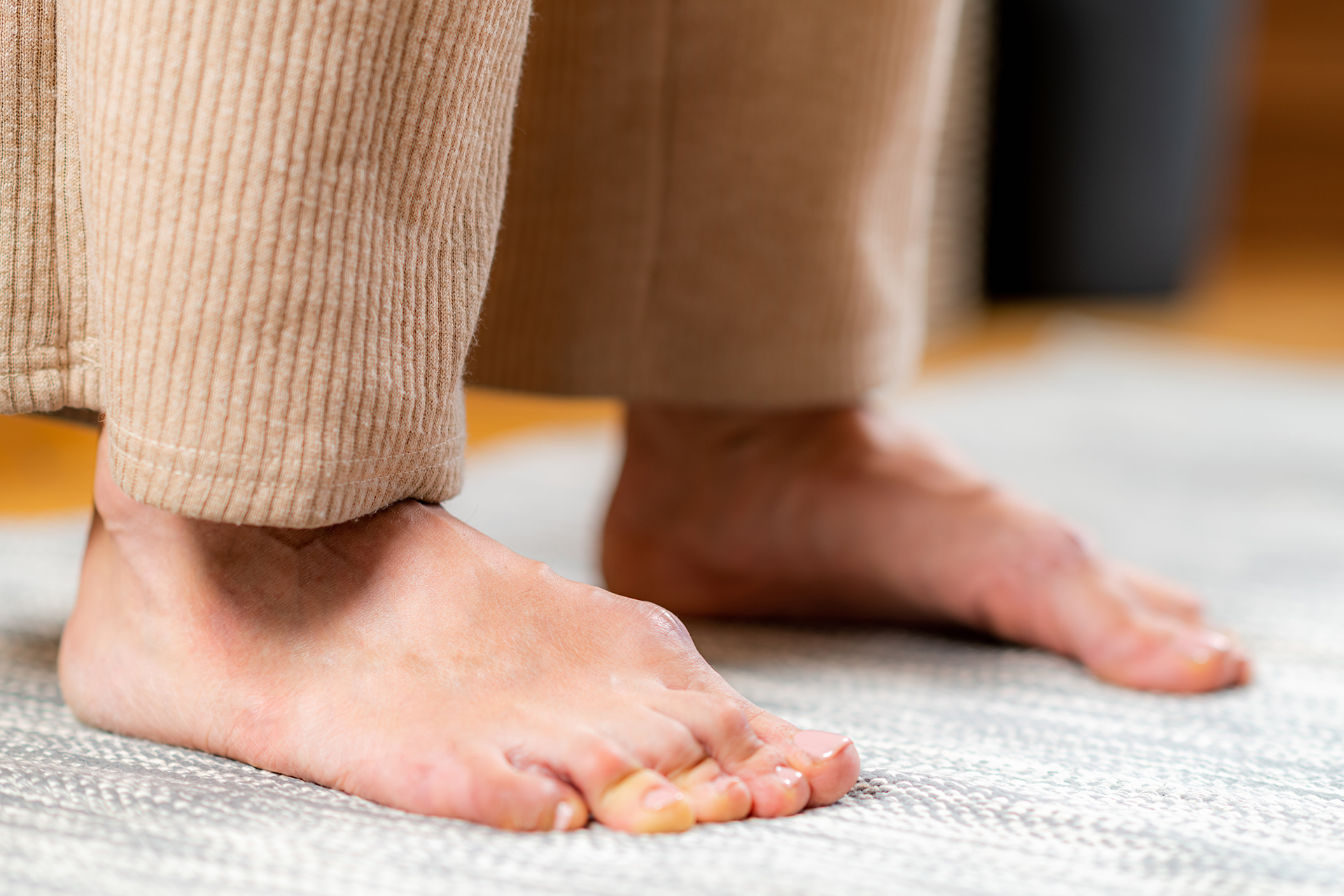Heel pain isn’t something you can just walk off. In fact, pain in the heel of the foot is a common problem that affects people of all ages and activity levels, making everyday tasks challenging.
Whether you’re a dedicated runner, stand all day for work, or just want to stay active, pain in the heel of your foot can severely impact your mobility and quality of life. In many cases, the discomfort begins subtly and gradually intensifies over time, eventually becoming impossible to ignore. Others experience a sudden pain in the heel of their foot, which is worrying, as a sharp jolt can signal more acute issues. Understanding the root cause of your heel pain is key to effective treatment and long-term relief.
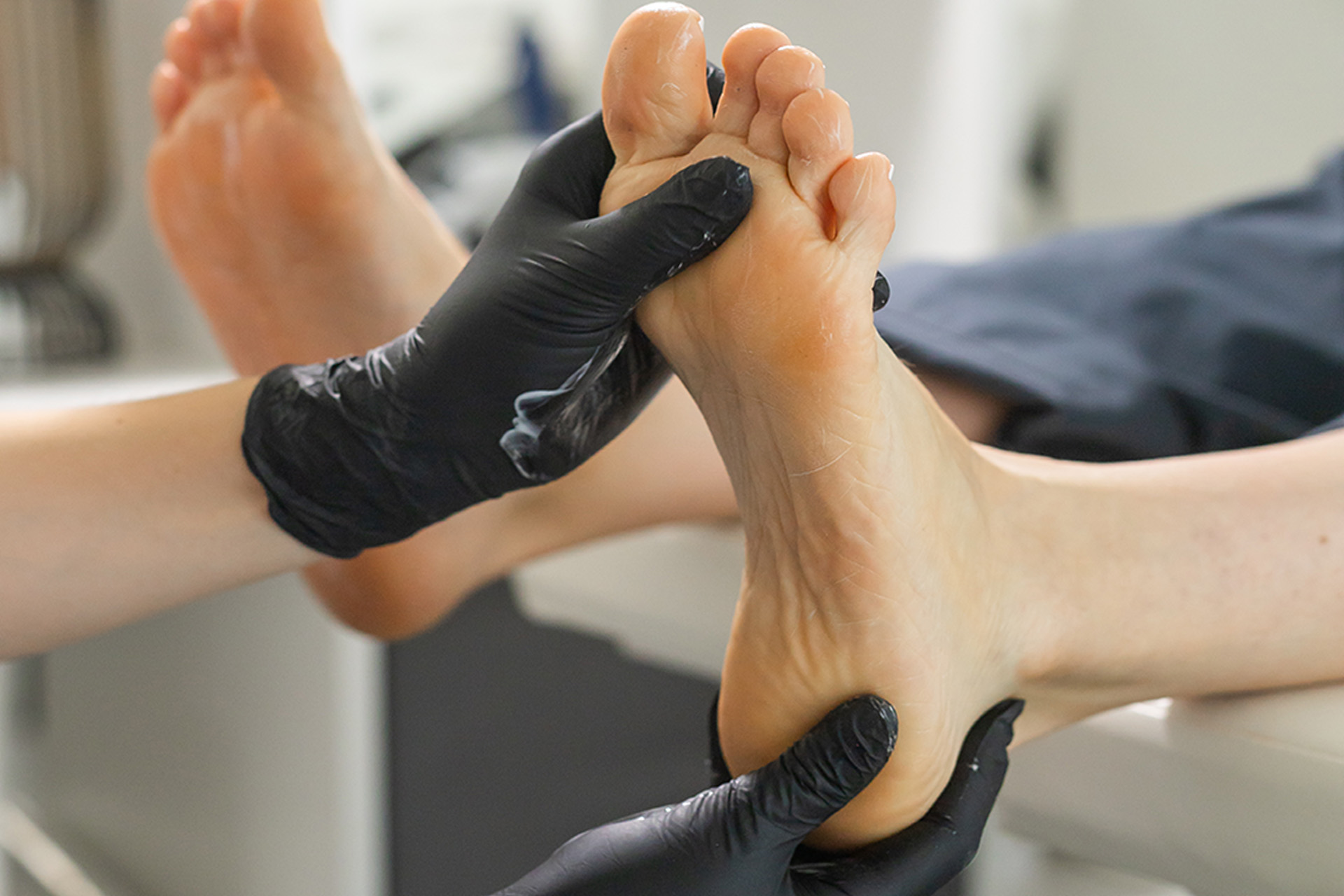
What Causes Pain in the Heel of the Foot?
There is no single answer that explains all types of heel pain. Inflammation, nerve compression, biomechanical imbalances, or soft tissue damage can cause heel pain. Systemic diseases such as rheumatoid arthritis can also cause heel pain, and existing risk factors such as age, activity level and foot structure can increase the likelihood of developing heel pain due to other conditions.
Some of the most common foot and heel pain conditions we see in our clinic include:
- Plantar Fasciitis: This is an inflammation of the plantar fascia, the ligament that connects the heel to the front of the foot and is a leading cause of pain in the heel of the foot in the morning. The stabbing sensation is often worse during your first steps after getting out of bed or after sitting for a while.
- Achilles Tendinopathy: Often felt as a sharp pain in the heel of the foot, this condition is characterised by degeneration or inflammation in the tendon that connects the calf muscles to the heel bone.
- Heel Spurs: These calcium deposits can cause persistent pain in the heel of the foot, especially if the foot has already developed plantar fasciitis.
- Bursitis or Fat Pad Atrophy: When the natural cushioning in your heel wears down or becomes inflamed, even light pressure can be uncomfortable.
- Nerve Entrapment: Tarsal tunnel syndrome, similar to carpal tunnel syndrome in the wrist, can cause tingling, burning, or sharp sensations in the heel.
- Sever’s Disease: This common cause of pediatric heel pain is an inflammation of the growth plate in the heel bone, affecting active children and adolescents.
It’s essential to understand that pain in the heel of the foot when walking, running, or even resting can have different underlying causes, which is why a proper clinical assessment is crucial.

Symptoms of Heel Pain
The symptoms of heel pain can vary depending on the underlying condition, but there are some common signs to look out for. Many people experience pain in the heel itself, the bottom of the foot or at the back of the heel. This pain can be sharp and stabbing, especially when first standing up in the morning or after sitting for a while, or it may be a persistent dull ache that worsens with activity. In some cases, the pain is accompanied by stiffness, swelling or redness in the affected area, making it uncomfortable to walk or stand for long periods.
Why Does Heel Pain Worsen After Running or Sitting?
If you’ve ever experienced pain in the heel of your foot after running, you’re not alone. High-impact activities, such as jogging or playing sports, repeatedly stress the heel and its surrounding structures, which can lead to plantar fasciitis. And the pain from plantar fasciitis is often triggered or worsened by these high-impact activities. Without adequate support or recovery, minor injuries can accumulate into chronic inflammation or tendon fatigue.
Similarly, pain in the heel of the foot after sitting or prolonged rest can also be a hallmark of plantar fasciitis. The fascia tightens during rest, and sudden loading stretches the tissue too rapidly, resulting in that telltale morning or post-sitting ache. If you experience heel pain after specific activities, be sure to mention these symptoms during your next visit to a podiatrist.

Diagnosing the Underlying Cause of Heel Pain
At The Foot Practice, we never guess when it comes to heel pain. Our clinical assessments begin with a detailed history of your symptoms, lifestyle and biomechanics. To gain deeper insight into how your feet function during movement, we use the RehaWalk® Gait System pressure sensor treadmill. This cutting-edge technology provides a dynamic gait analysis, mapping out pressure points and identifying faulty movement patterns that may be contributing to your heel pain.
Footwear assessments are also part of our diagnostic process. Shoes that lack arch support or cushioning can exacerbate pressure on the heel. For runners, our clinicians will assess not just your trainers but also your running technique, cadence and stride length.
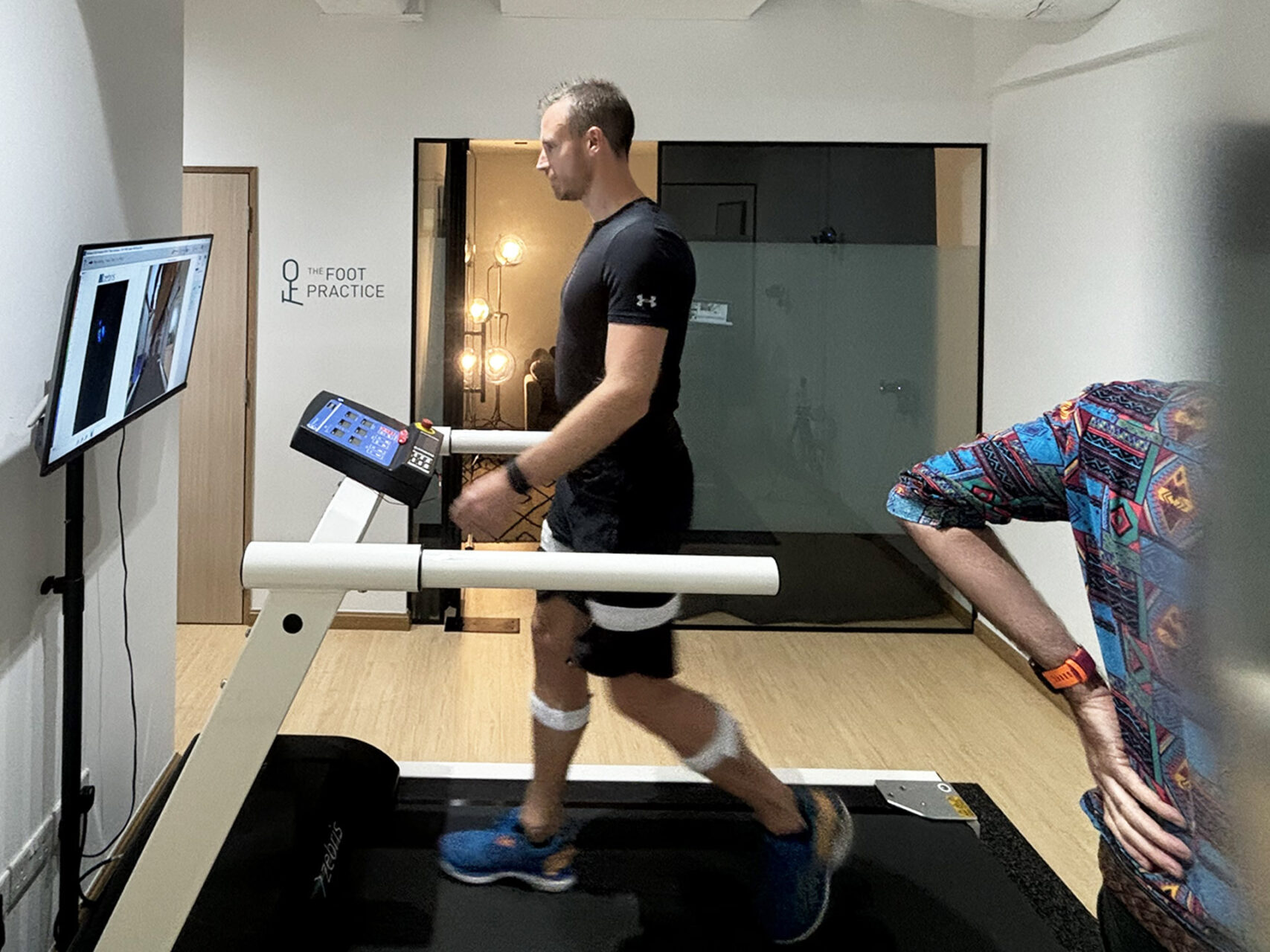
Managing Heel Pain at the Source
Once we’ve identified the source of your pain in the heel of your foot, we will tailor a comprehensive management plan that addresses both symptoms and the underlying cause. Intervention often includes a combination of manual therapies, corrective support and education.
Mobilisation exercises help loosen tight structures and improve joint function, particularly in the ankle and midfoot areas. Our podiatrists will guide these to ensure they target the correct muscle groups without aggravating symptoms.
For structural issues or abnormal loading patterns, we may prescribe custom orthoses. These inserts are made specifically for your foot shape and walking style, providing corrective support and redistributing pressure away from the heel. Orthotic inserts can be beneficial for people with flat feet as they provide extra support to prevent heel pain and reduce strain. Orthoses can also help ‘retrain’ the foot in walking and correct gait alignment issues.
In cases where inflammation is persistent, Shockwave Therapy may be recommended. This non-invasive treatment utilises acoustic pulses to stimulate healing in damaged soft tissue, making it particularly effective for chronic conditions such as plantar fasciitis or Achilles tendinopathy.
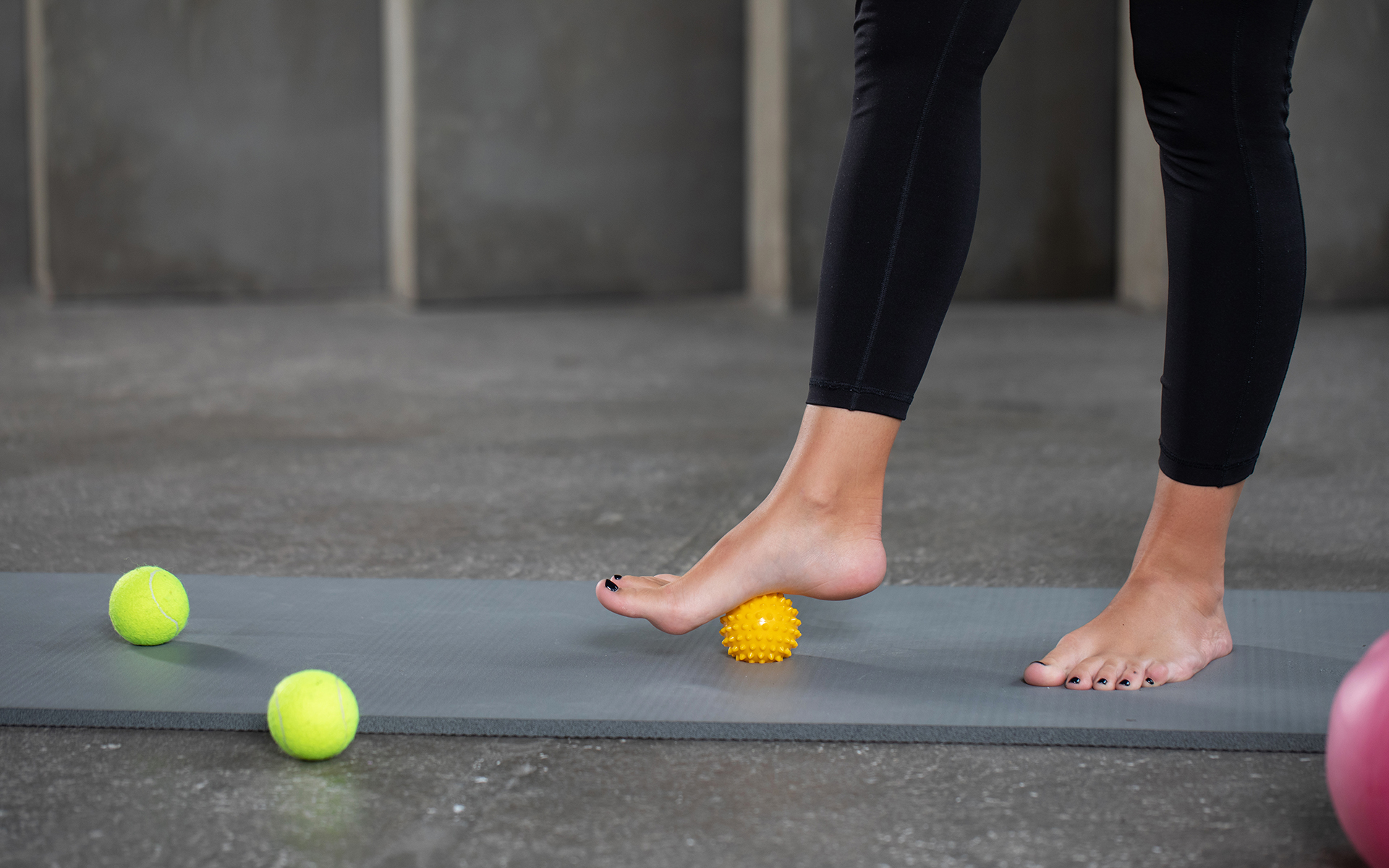
Can Heel Pain become Chronic?
Yes, and that’s why early intervention is key. What starts as sudden pain in the heel of the foot after a weekend hike can quickly turn into persistent pain in the heel of the foot if the cause isn’t addressed. Some patients try to ‘push through’ the discomfort only to find that the pain becomes more frequent and severe, and more complicated to manage.
Unfortunately, heel pain that lingers can result in compensatory movement patterns, where other parts of your foot or body take on the load. This can lead to further issues such as knee, hip or lower back pain.
Regular check-ins with a podiatrist, especially during an intense training cycle, can help prevent minor discomfort from becoming a major setback.
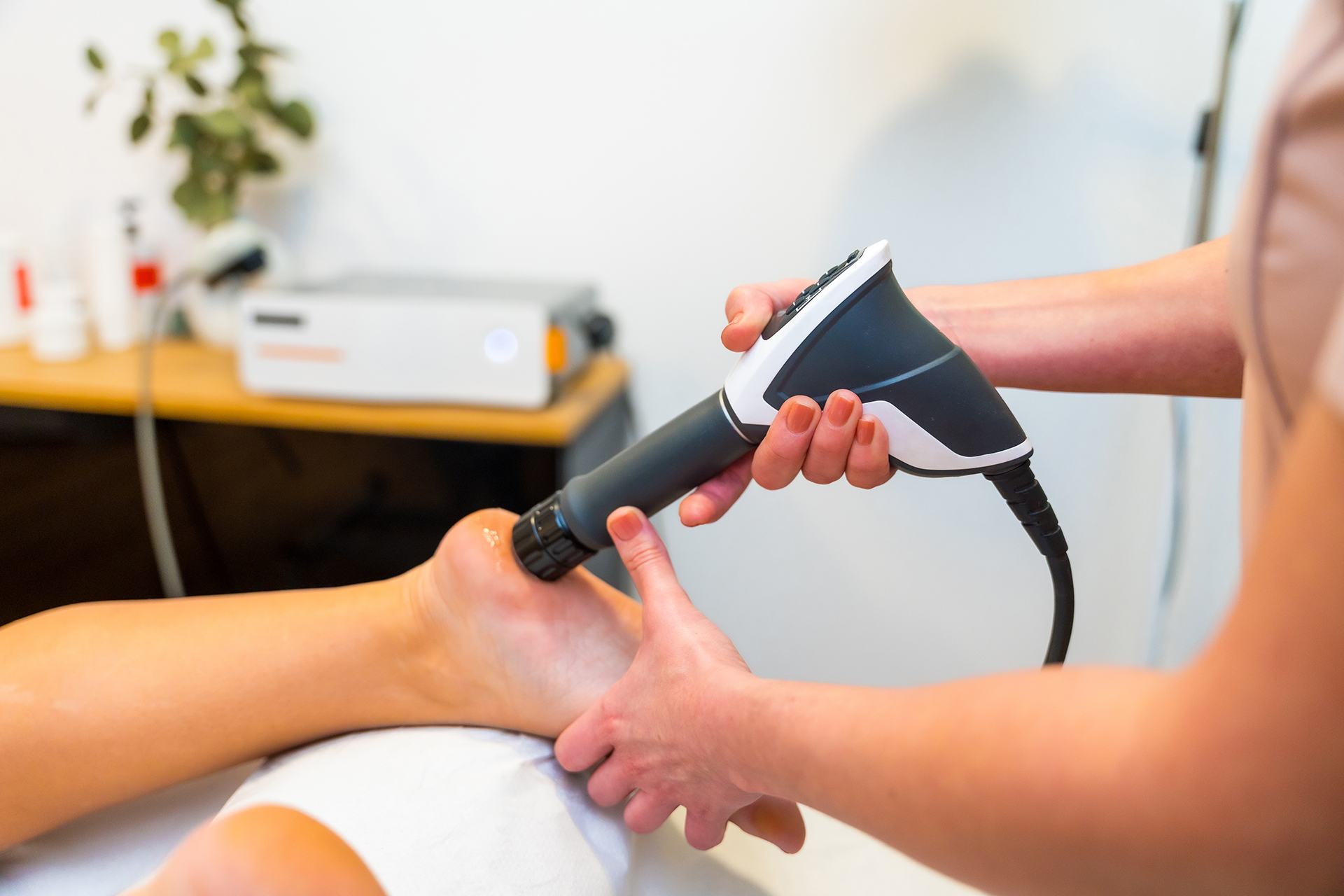
When to See a Podiatrist
If your pain in the heel of your foot persists for more than a few days, worsens with activity, or limits your daily movement, it’s time to see a specialist. Any sharp heel pain that disrupts your life or causes you to alter your walking pattern should be evaluated by a professional. Get in touch with The Foot Practice to get on track to pain-free walking, running, and living.

